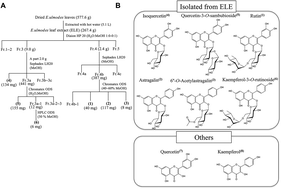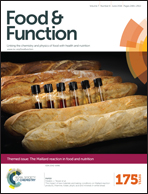Eucommia ulmoides extracts prevent the formation of advanced glycation end products
Abstract
Proteins non-enzymatically react with reducing sugars to form advanced glycation end-products (AGEs), resulting in the induction of protein denaturation. Because the levels of AGE increase with age and are elevated in age-related diseases, such as diabetes and atherosclerosis, the intake of compound(s) that inhibit the formation of AGEs by daily meal may represent a potential strategy for preventing age-related diseases. In this study, we measured the inhibitory effects of several Eucommia ulmoides extracts on the formation of AGEs, Nε-(carboxymethyl)lysine (CML) and Nω-(carboxymethyl)arginine (CMA). Although a crude extract obtained from E. ulmoides bark is widely used as herbal medicine, E. ulmoides leaf extract (ELE) inhibited CML and CMA formation more effectively during the incubation of gelatin with ribose. Therefore, the inhibitory effects of compounds present in ELE on CML and CMA formation were studied. As a result, isoquercetin showed the strongest inhibitory effect of all the tested ELE components. These results indicate that the oral intake of ELE may inhibit the formation of AGEs, thereby ameliorating age-related diseases.

- This article is part of the themed collection: The Maillard reaction in food and nutrition

 Please wait while we load your content...
Please wait while we load your content...